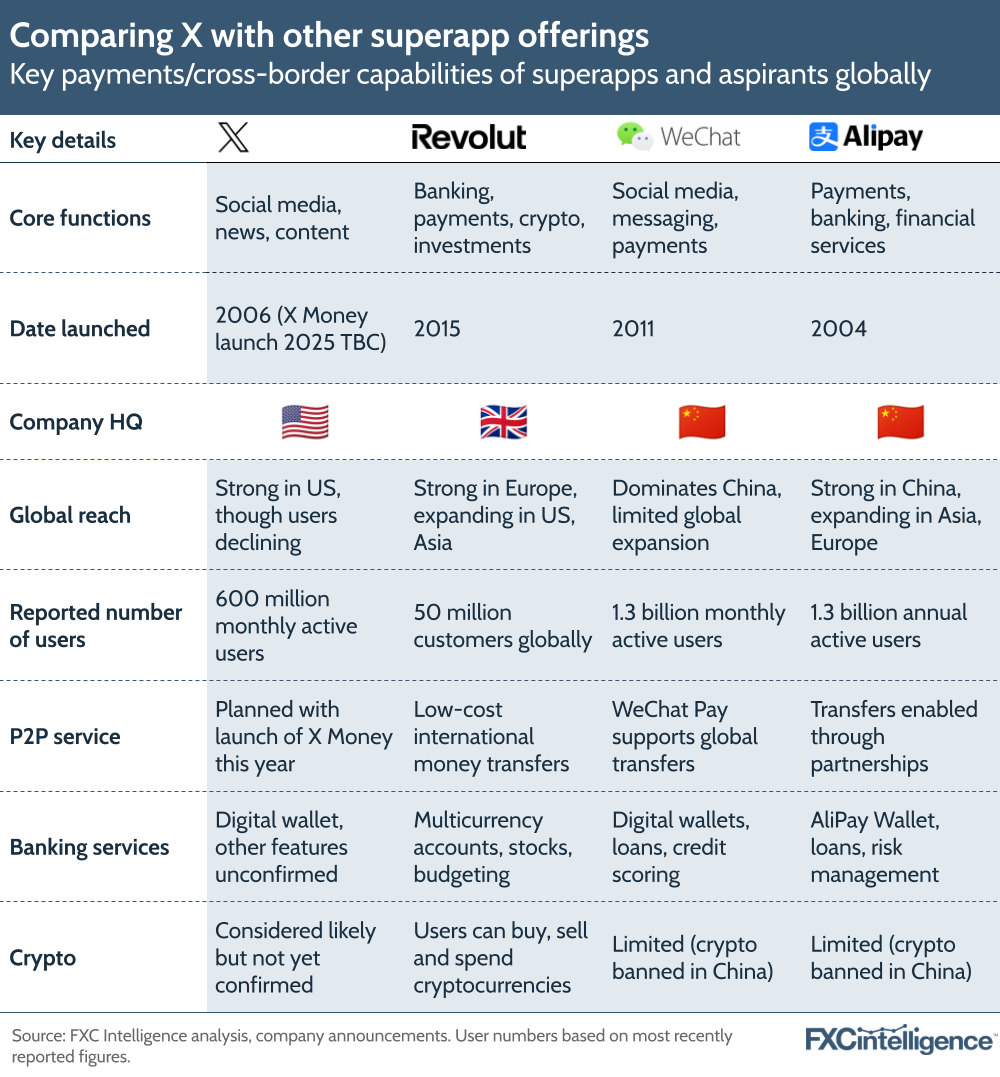X, formerly Twitter, recently announced plans to launch a P2P payments service later this year. However, there are a number of challenges the app will face when it comes to offering payments as part of its aspirations to be an “everything app”. We explore these challenges below.

As per a post from X’s CEO Linda Yaccarino at the end of January, the social media platform has partnered with real-time payments service Visa Direct to power an instant P2P payments service for X Money – a digital wallet service that will be connected to user’s X accounts, and is reportedly expected to enable tips for creators and cryptocurrency.
X’s move to include P2P payments is part of its aspirations to become a superapp in a similar vein to offerings such as WeChat, Alipay and Grab in Asia. These apps grew quickly as they answered an unmet payments need, but in Western markets, a number of payment solutions already exist. PayPal, Venmo and Zelle already dominate the P2P payments space in the US. Meanwhile, PayPal and Revolut – two payments companies with their own aspirations to become superapps – already deliver a wide range of payment and banking services.
Aside from competition, another challenge is regulation. X currently holds 39 money transmitter licenses in the US and its partnership with Visa Direct will give it the ability to add cross-border capabilities from the 39 states these are with, using Visa’s network. However, it will likely need to form further partnerships if the platform hopes to challenge other players in the space with global capabilities. Building trust with users – with strong safeguarding and fraud prevention measures – will be crucial, particularly in a period when recent reports indicate that millions of users have been departing the platform.
One area where X could innovate beyond the existing powerhouses of WeChat and Alipay is cryptocurrencies, which have been banned in China. Having said this, backing the use of digital currencies in P2P payments remains risky, given that regulations around the use of crypto are still being decided in the US.
X’s foray into payments reflect moves from other social media platforms into the space, including TikTok and Instagram’s ecommerce offerings as well as Facebook’s Meta Pay, a P2P service. However, in X’s case in particular, the key question will be whether it can offer a differentiated enough service from existing payments powerhouses to validate its existence.


